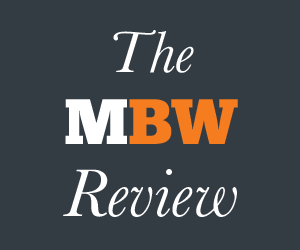
The MBW Review offers our take on some of the music biz’s biggest recent goings-on. This time, we look ahead to Spotify‘s Q2 2018 earnings report tomorrow (July 26) and drill into a key question for the streaming service: is it making a good decision by pricing its monthly subscription tier at the limit each separate market will bear? The MBW Review is supported by Instrumental.
As streaming expands around the world, some countries with huge populations will have lower prices and big potential.
While in Mexico City recently I ran across Spotify pre-paid cards in a 7–11 market. The cards provide Spotify premium access for varying periods at 100 pesos per month, or about $5 US—half of the standard $9.99 rate in the United States.

The day before Spotify’s Q2 2018 earnings, it’s worth thinking about where the company – and the industry for that matter – is going to find revenue growth in the coming years. Spotify has a market value of circa $34 billion, suggesting investors have already baked high expectations baked into the price.
What Spotify has done up to now certainly has value: fast company growth, subscriber acquisition, product features, brand equity, etc. But what comes next?
People have speculated Spotify could release its own speakers or buy/merge with Live Nation. But Spotify can focus on its core business and look past North America and Europe.
Emerging markets haven’t had the strongest digital music environments but now have access to a superior experience and value proposition than piracy. And so emerging markets present some of the biggest growth opportunities.
Spotify knows emerging markets are key. Here are statements from its IPO filing from February, 2018:
“While streaming has changed the way many people access music, we believe there is an untapped global audience with significant growth potential. We believe the universality of music gives us the opportunity to reach many of the over 3.6 billion internet users globally”
“In aggregate, only 13% of the payment-enabled smartphone users in the 61 countries and territories in which we have active Users use our platform”

Spotify’s subscription price in Mexico shows that average revenue per user (ARPU) is different from one country to another. It also suggests a company’s ARPU will fall as a streaming service expands beyond the developed markets that built its subscriber base.
For example, a single subscriber in the United Kingdom, one of Spotify’s original markets launched almost a decade ago, is worth more than a single subscriber in a newer market such as Indonesia.
Differing ARPUs is the nature of a global company. Spotify and other streaming services can only charge what the market will bear.
The standard cost for a premium music service in the United States is $9.99, or €8.52, per month. A company would love to keep a price steady around the world.
But to penetrate the Indonesian market, for example, could require a price less than €3.00. After all, the local price is going to reflect the relative purchasing power of the country. And so it makes perfect sense that Spotify costs €2.94 in Indonesia, not €8.52.
To compare different countries’ prices, I looked up Spotify prices in a small but varied sample of markets. Each price represents the monthly fee in local currency converted to euros (unless the local currency is the euro, like in France). I used the euro because Spotify uses it in its financial statements.
To aid the comparison, I included each country’s gross domestic product at purchasing power parity from a 2017 World Bank list on Wikipedia. GDP (PPP) adjusts GDP to take into account the prices for goods in various countries.
The pairs of numbers line up fairly well, showing Spotify has set local prices that properly reflect each country’s GDP (PPP).
They’re not always a perfect match (e.g., United Kingdom, France, and United States) but the relationships are clear.

ARPU isn’t everything. Large countries can have both low ARPU and big potential. Some markets with low prices also have populations among the Top 10 or 20 in the world. To compare countries by revenue potential I looked up each country’s population and standard price for Spotify Premium.
Multiplying the two results in the value of the total addressable market. I made two assumptions for the sake of simplicity.
First, I assumed all citizens are potential subscribers—even children and senior citizens, who tend not to pay for music. And I didn’t take into account student and family plans. It’s optimistic to think each person is a potential subscriber, but it’s nonetheless a fair way of comparing market values.
Brazil’s price is the equivalent of €3.92 per month – on the low side – but its population of 211 million makes its addressable market worth €9.9 billion per year — nearly €1 billion larger than the United Kingdom.
Mexico’s price is about half of France’s but Mexico has twice France’s population.
Indonesia’s population is 27x than of Sweden, Spotify’s home country and a market with an excellent adoption rate.

What stands out, partly because I’ve highlighted them, are the emerging markets.
Their populations give them the potential to generate large amounts of revenue in spite of a low ARPU. To the right I added each country’s rank on the 2017 global digital revenue ranking; the rankings would look far different if the emerging markets approached their potential digital revenues.
Indonesia, ranked #27, has the potential to match the United Kingdom, a perpetually strong recorded music market.
The Philippines, #39 on the digital list, could be more valuable than a top 10 market like Australia. Brazil and Indonesia, each with populations exceeding 200 million, have huge, untapped reservoirs.
Of course, streaming services need to actually sign up people to capture a market’s potential value. Each country has unique variables at play.
Two countries may have similar popular music but different languages, mobile Internet adoption, and different social norms about paying for music. In every location, Spotify will need to deploy market-specific tactics to acquire and retain subscribers. Spotify does exactly this in the Philippines and Thailand by offering daily, weekly and monthly premium access.
In Thailand the standard monthly rate is 129 baht (€3.31, US $3.89). Customers can also pay for a day or a week, starting at 13 baht per day (€0.33 / $0.39) and payment must be made on a mobile phone (two carriers are shown as partners).

Here are the different monthly Spotify prices in my sample of countries, converted into Euros at today’s currency rates.
I found these prices online from what I consider good sources. Sometimes they came directly from a particular country’s Spotify page found through that country’s Google search page and translated with Google Translate:
- Philippines: €2.07 / 129 pisos / $2.42
- Indonesia €2.94 / 49,990 rupiahs / $3.44
- Brazil: € 3.92 / 16.99 reais / $ 4.49
- Thailand: €3.31 / 129 baht / $3.89
- Mexico: €4.48 / 100 pesos / $5.26
- Malaysia: €5.24 / 24.99 ringgit / $6.15
- Japan: €7.50 / 980 yen/ $8.80
- Australia: €7.59 / $11.99 / $8.90
- United States: €8.52 / $9.99
- Sweden: €9.53 / 99 kroner / $11.18
- France: €9.99 / $11.72
- United Kingdom: €11.13 / £9.99 / $13.12

Main image credit: Ink Drop / ShutterstockMusic Business Worldwide





